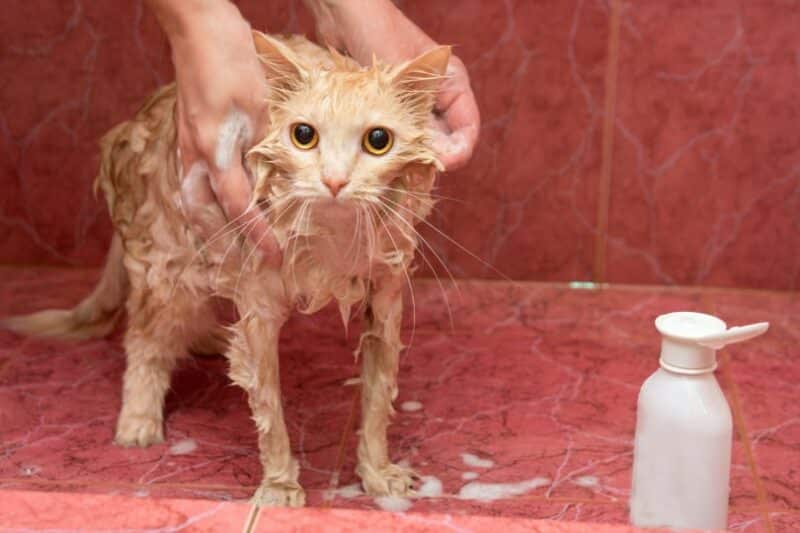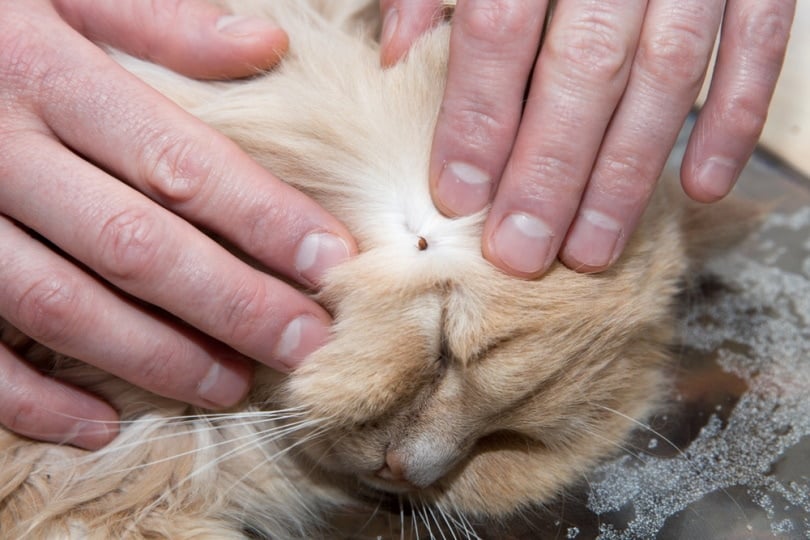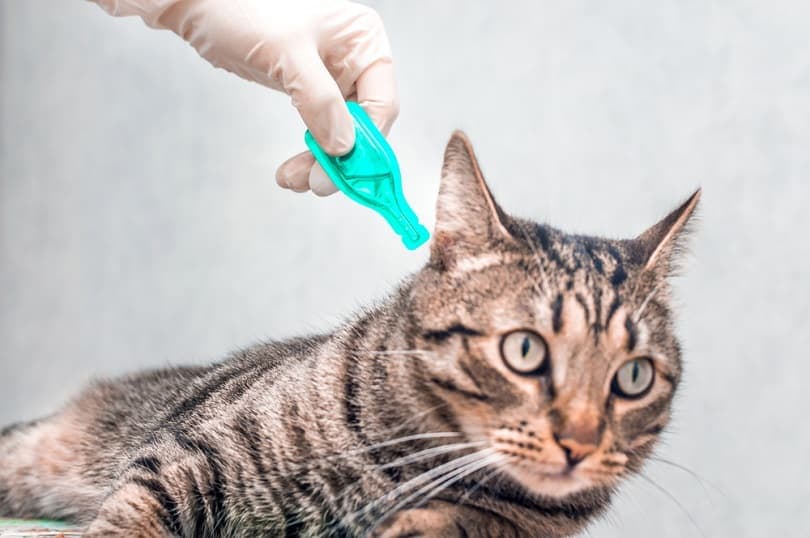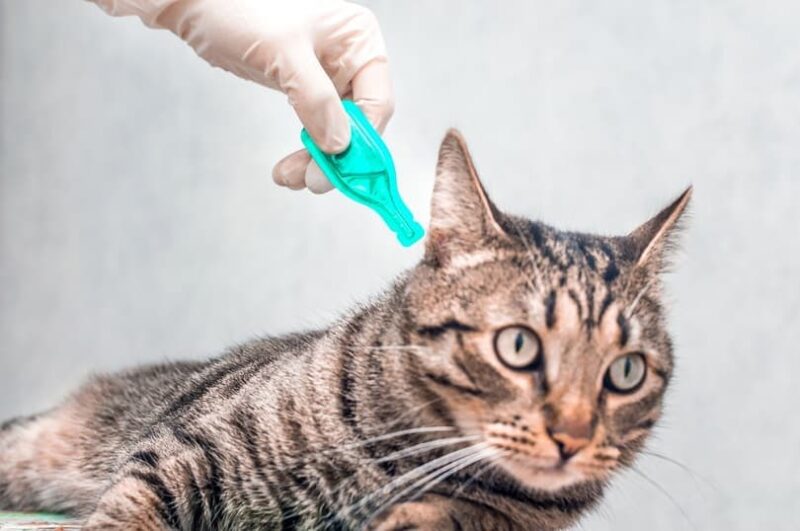The winter season will soon be winding down, and the warmer temperatures will descend. If you have a cat, you know that spring and summer are prime tick seasons. It’s no fun having to get a tick off your cat and even less fun if you find one on your own body.
Not only are the pests disgusting and capable of spreading disease, but they are also tough to dislodge from your cat’s skin once they’ve taken hold. So, how do you prevent ticks from making a meal out of your cat’s blood? We’ll give you our favorite tips here.
The 6 Ways to Prevent Tick Bites on Cats
1. Oral Medications
You can use oral medication to keep ticks and fleas off your cat. Some brands feature chewable tablets that you can break up and add to the cat’s food. Since most cats will not swallow pills, chewable tablets are a preferred alternative.

2. Shampoos, Treatments, Powders, and Sprays
There are also over-the-counter shampoos, on-spot treatments, powders, and sprays that you could use to prevent ticks on your cat. We recommend asking your vet for the best product recommendation for your cat and avoiding anything containing permethrin and pyrethrin, as these are toxic to cats. Since cats like to groom themselves, your first choice should be a spot-on treatment placed in the back of their neck, where they can’t reach.
Make sure you read the directions carefully before using any of these products on your pet, and keep them away from small children. Use gloves with application, and ensure that you dispose of all products safely and far away from water bodies.

3. Tick Collars
Collars that repel ticks can also be helpful as an extra preventive method but don’t expect them to work solely on their own. When attaching this collar, you need to make sure it makes contact with the skin to be effective. It’s also essential to ensure you can easily slip two fingers between the cat’s neck and collar to make sure it is not too tight.
Watch for allergic reactions when you first put the collar on the cat, and if they begin scratching at it, remove it and use another preventative method.
4. Check Your Cat Regularly
One of the best ways to prevent your cat from getting tick bites is to check them every time they come in from outside, especially when they’ve been in places where ticks are commonly found. Look inside the cat’s ears, between their toes, and on their neck and legs.
If you catch the tick before it starts to feed, you can save your cat from possibly getting a tick-borne disease. Remove the tick carefully and quickly once it is found. If the tick is attached, you will need to ensure that it lets go of your cat before attempting to remove it. Be sure to use tweezers and not your bare hands.

5. Treat Your House and Yard
Another way to prevent your cat from getting a tick is by treating your house and yard for ticks. Keep your lawn, bushes, and trees trimmed so that ticks and fleas don’t make them their home. You need to be careful because pesticides can make other pets, people, and even fish sick, so read the directions carefully.
You can also hire a professional to treat your home and yard. Be sure to ask for the use of pet-safe products only.
6. Make Your Cat an Indoor Pet
While there’s no guarantee that your cat won’t pick up ticks from other animals coming in and out of your home, making your cat an indoor pet will go a long way toward keeping the feline tick-free.
If your cat has never been outside, don’t let them start now. If you have an outdoor cat, try to limit the time they’re outside instead, so you can at least keep a handle on them when checking for ticks.
Cats should be strictly indoor pets, anyway, as it’s safer for them for various reasons. You never know when your cat will become lost, get struck by a car, or get into a fight with another cat or dog, so it’s best to keep them indoors. It’s better to be safe than sorry in all instances with your furry friend.
Conclusion
The chances of an outdoor cat picking up a tick are high in the spring and summer months, and if you live in the south, you may also have to worry about it in the fall and winter.
These tips will help you prevent your cat from picking up ticks. Some of the tick preventatives may not work on every cat, and you need to be careful when using products that contain harsh chemicals. Watch your cat for allergic reactions to any new product you use, and keep all products away from small children.
See Also:
Featured Image Credit: Anastasiya Tsaiasemnikava, Shutterstock












